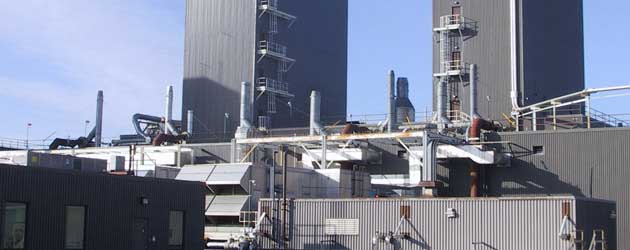Industrial Facilities and Environmental Noise Control

Increasingly, environmental noise emission is being classified and treated by regulators as a contaminant or pollutant, similar to other types of emission, such as NOX, odor or particulate. Tighter restrictions on environmental noise place real demands (with non-trivial cost ramifications) on industrial facility operators to reduce noise emissions.
Environmental Noise Emissions
Acceptability limits for environmental noise emissions vary from jurisdiction to jurisdiction. In general though, the principle upon which environmental noise limits are premised is that of avoiding disturbance or annoyance to neighboring residents. Whereas limits for worker noise exposure are based on minimizing risk of hearing loss, the limits for environmental noise impacting a residence are set at much lower sound levels. The onset of adverse noise impact, as evidenced by demonstrable loss of enjoyment of property and concerted community reaction to noise, occur at much lower sound levels (e.g., often on the order of 40 to 50 decibels) than the onset of the risk of hearing loss (80 to 90 decibels).
Sound Level Limits
Sound level limits are often based on the characteristic background sound environment occurring in the area surrounding the sound source under assessment. In areas having an essentially urban acoustic environment with a background sound comprised of man-made activities such as traffic and other industry, the appropriate sound level limit is higher than would be applicable for a quieter, rural area. In some jurisdictions, determining the applicable limits for environmental sound emission involves measuring the background sound (without the operation of the source under assessment).

In some ways, the limits for noise emissions are less abstract than those for other types of emissions, since they are based upon the potential for the industrial sound source to be audible or disturbing at a neighboring residence. When the limits are significantly exceeded, vehement noise complaints can be expected. A preponderance of complaints over time may bring the industry under the scrutiny of the regulatory authorities, or of the company’s own corporate directors who wind up fielding the telephone calls from angry residents.
‘Pristine Environment’ Provisions for Noise
Even in the rare cases where a new industrial site is to be located remotely enough that there are no nearby noise sensitive receptors, regulations in some jurisdictions now include ‘pristine environment’ provisions. These regulations may require the proponent to assess the environmental noise impact at a pre-determined radius, to address the possibility of future encroachment of other land uses, such as residences. Realizing that a remote area may not always be remote in future is a wise perspective at design time, since remedial noise control retro-fitting is often prohibitively costly, and not always possible.
Importance of Considering Noise Impact Early
These factors emphasize the importance of considering noise impact early in the design process of a new industrial facility, or a contemplated expansion. The need for an environmental noise assessment of an existing facility may be triggered by:
- Requirements for a baseline study in anticipation of an expansion
- In response to complaints over existing noise emissions
- As an acoustic performance qualification with regard to contractual responsibilities for newly installed equipment
- To satisfy regulatory requirements for periodic acoustical auditing
Effective assessment and control of environmental noise emissions requires accurate identification and quantification of the significant noise sources, and an understanding of the available means of noise mitigation.
